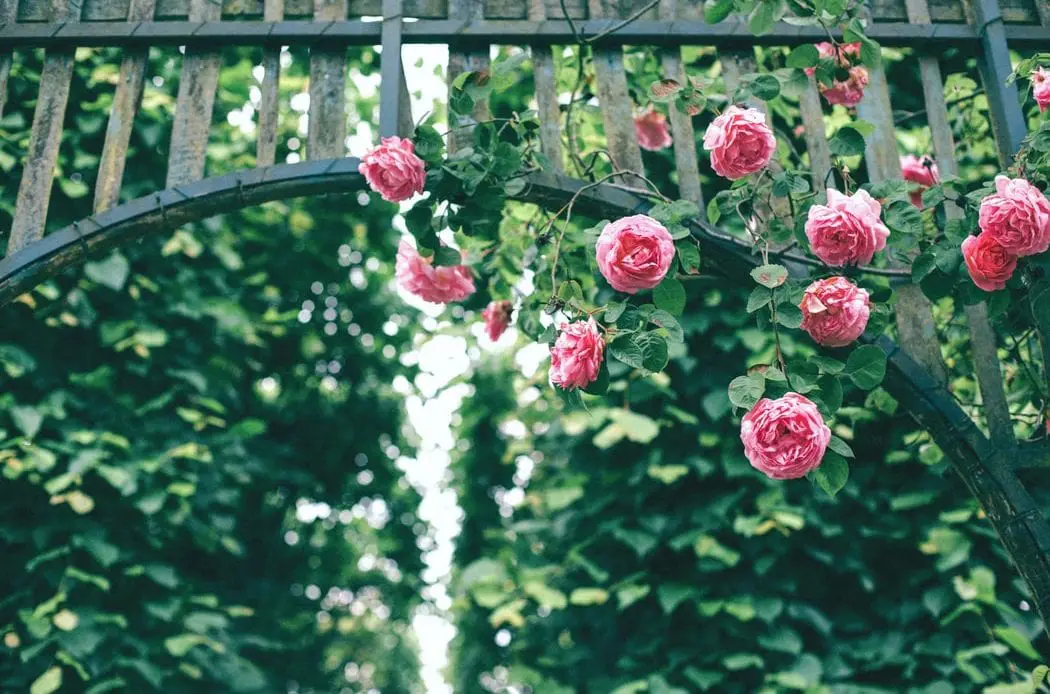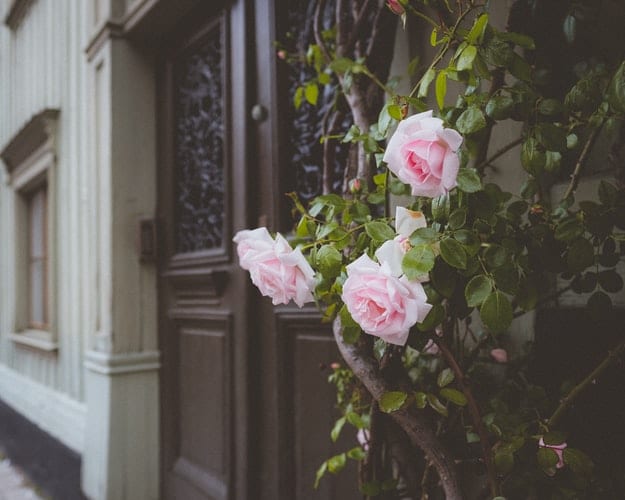
Everyone loves a home covered with roses. The fragrance, the colors and the mood that it generates is enthralling. While the traditional rose in itself can be a mood changer, old fashioned climbing roses can enhance your mood to another level altogether. Climbing roses can be particularly adorned on fences, arbores and trellises which gives the house and its landscape surrounded and full of roses. The climber plant usually grows to 12 feet in length, producing different colors and kinds of roses and the look is analogous to beautiful tresses on a cottage.
Climbing Roses basics: Before you decide on a variety that you would like for your home, familiarizing yourself with different kinds of climbers and what suits your climate is important. The next step is to choose the color that pleases you.
Once you have determined these two factors, it is imperative to make sure that the climber is disease resistant. It should also produce flowers at least a couple of times before it reaches the end of its life. Some of the most resistant of rose climbers are the cheery yellow climbing rose. It is low maintenance and has a lot of vigor and seldom die off prematurely.
Conditions for growth: The soil must be well-drained, and loamy. You must make sure that you do not over-water these plants, as that would lead to different kinds of diseases like fungus and black spots. Moreover, these diseases can spread to other plants in the area, and you may have a disease spread situation on your hands if not careful. The idea is to keep the soil well drained, thereby preventing the accumulation of water, thus keeping the planting site clean. Sunlight is a factor that a rose climber just cannot do without. Lots and lots of sunshine is one of the best ways to bring about lush and healthy growth.
Maintenance: The basic purpose of a climbing rose, apart from the decoration that it provides, is to serve as doorway or screen. Care should be taken to guide the climber upward to eventually simulate the shape of a door or screen. Therefore, a support in the form of threads or ropes should be erected about 3 inches from the wall so that the climber can climb without exerting itself too much. This also serves as ample breathing space for the plant, helping it to grow quick and healthy. It is always advisable to tie your climber to a fastener and guide the climber in the shape of a fan. This helps in the overall health of the plant.
Pruning: Apart from water and lots of sunlight, pruning is the next most important factor to guide the plant into a prolific growth. However, the plant needs to establish itself before you can go about pruning it. Establishing, in a plant indicates the roots and stem maturing enough to look strong and function well. This takes about a year. Pruning needs to be done once every year. Pruning helps to maintain the shape of the plant. It also helps maintain itself in between blooms. With proper and timely prunes, your climber will grow stronger, healthier and will likely bloom better.
Blooming happens twice every season usually, first, on old stems and later, on the new growth. The key is to prune your climber late winter, which almost guarantees truckloads of blooms later in the season. It is advisable to prune right after the bloom on climbers that are older in age and bloom just once in a year.
Tips to prune: Firstly, it is imperative that all damaged, crossed canes, dead and diseased plants be removed from the plant. Later, the side shoots must be cut short to around 3 inches so that they are in line with the main stem. Your pruning tool must be disinfected with alcohol after every cut. This is to stop diseases from spreading across the climber. This also prevents your pruning tools from developing rust over time. After every pruning job, always wash, rinse, and dry your tools to prevent it from developing rust, which may affect the plant during the next prune.
Fertilizers: The amount of fertilizers needed for the climber depends on the region it is growing in. For example, fertilizers are used in very less quantities in the North, where climbers are known to grow for only three or four months in a year. However, in the South and the West, climbers are known to grow for a good 9 to 10 months. Here fertilizers are needed in larger quantities.
Different fertilizers commonly used are:
1. Time release rose food: This fertilizer may be applied a couple of times during a season. Only remember to add water, before and after use to stop the plant from burning away.
2. Cotton seed and alfalfa meals can be administered in equal parts. This fertilizer is purely organic and can be dropped over the base of the plant at intervals of 10 weeks each.
3. Another mix of fish, cottonseed, steamed animal bone, fish and cotton seed is effective for the lush growth of the plant.
Mulching: Applying a layer of mulch at the base of the rose climber does a world of good for the plant. Mulch is a mix of hay, grass cut into small pieces and organic material placed on the surface of a tree or a plant at the base. Mulch helps to maintain moisture in the soil, and improve the structure of the soil and enhance fertility. Every forest has a natural mix of mulch at the base of every plant. This can be recreated to use on our domestic plants at home.
Advantages of Mulching: Mulching helps keep the soil moist and protected from harsh temperatures. Secondly, mulching is known to keep the soil fertile and keep the soil nutrients intact. A well-mulched garden will have no problem with weeds and the effort to cultivate is reduced to many times.
Old fashioned climbing roses: Old fashioned climbing roses can be your front yards most attractive decoration. Apart from being planted in the soil, you can also plant these climbing roses in pots and flower beds. Contrary to rose climbers in the soil, climbers in pots and flower beds offer a lot of flexibility to gardeners in terms of custom decorations.
Methods to spruce up your front yard:

Rose on an Arbor or Pergola: An old-fashioned climbing rose plant is best presented on an Arbor or Pergola. Help the climber to hold on to the Arbor and grow on it. Additionally, you can tie the canes with strings so that it does not fall over.
Providing beauty to old shed or structures: Sheds or warehouses in your backyard do not necessarily look pretty. It may be old, beat up and not painted for many years. Plant those good old-fashioned rose climbers next to the walls of the shed. Attaching hooks to the wall helps rose climbers to hold on to the hooks as they grow, bloom and adorn the walls of the shed.
Rose Climbers in the balcony and windows: A balcony can be a source of a thriving rose climber. Planting them in flower beds or pots and letting them fall off towards the ground would look very attractive. Bloom season would cover the area with roses of different colors giving your balcony and home a beautiful, attractive, and natural look.
Roses climbing trees: An old-fashioned climbing rose can become an inseparable friend to a tree in your front yard. Climbing roses are allowed to hug trees in your front yard and start gradually climbing on them. However, since roses need a lot of sunlight to grow well, always be sure that the canopy of the tree is thin or small, thereby helping sunlight to directly hit the climber. Color of roses must be in contrast with the bark of the tree which will help the roses to stand out. Incorporate netting, strings and clips to help the canes grow without hindrance.
Fence, gates and roses: The fences that demarcate your home and your entrance gates can be a great place to be adorned with climbing roses. You can help the rose canes to shape up in rolls or rotations. By doing this, you can ensure the blooms fill up the whole fence as opposed to otherwise just lining the top edge.
Festoons: A festoon is a garland of flowers hung in a curve as a decoration. An old-fashioned climbing rose can be used as a Festoon. This can be gracefully hung on walls or on a door giving an adorable look to the premises.
Garden lamps and streetlamps: A street lamp can look out of place with its bare metallic look. Training rose climber around these streetlamps can, in fact, drastically change the landscape of the area. However, you must make sure that the canes do not douse the lamp from shining. Therefore, it is important to prune, cut and keep these climbers from reaching the bulbs.
